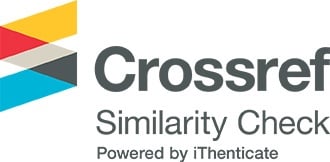TIỀM NĂNG CỦA microRNA TRONG TIÊN LƯỢNG VÀ THEO DÕI ĐÁP ỨNG ĐIỀU TRỊ Ở BỆNH NHÂN SUY TIM
Các tác giả
DOI: https://doi.org/10.59294/HIUJS.KHSK.2025.004Từ khóa:
microRNA, suy tim, dấu ấn sinh họcTóm tắt
Đặt vấn đề: microRNA (miRNA) là nhóm các RNA không mã hóa, với chiều dài dạng trưởng thành khoảng 18 - 25 nucleotide, là phân tử có vai trò quan trọng trong điều hòa biểu hiện gen ở mức độ sau phiên mã trong tế bào. Thông qua liên kết bổ sung với vùng 3' không mã hóa (3’UTR) của RNA thông tin (mRNA), miRNA có thể gây ức chế dịch mã hoặc phân hủy mRNA, qua đó điều hòa các quá trình sinh học như tăng sinh, biệt hóa, chết theo chương trình và đáp ứng miễn dịch. Trong bệnh tim mạch, nhiều nghiên cứu cho thấy sự rối loạn biểu hiện miRNA có vai trò quan trọng trong sinh bệnh học suy tim như tái cấu trúc thất, phì đại tim, xơ hóa, viêm và chết tế bào cơ tim. Thay đổi biểu hiện miRNA như miR-1, miR-133, miR-208 đã được báo cáo ở bệnh nhân suy tim, có liên quan đến độ bệnh cũng như tiên lượng của bệnh nhân. Mục tiêu nghiên cứu: Trình bày một số phát hiện về tiềm năng của microRNA trong tiên lượng và theo dõi đáp ứng điều trị ở bệnh nhân suy tim. Phương pháp nghiên cứu: Tổng hợp y văn và trình bày khái quát về vai trò của miRNA trong tiên lượng và theo dõi điều trị ở bệnh nhân mắc suy tim do nhiều nguyên nhân khác nhau. Kết luận: Nghiên cứu giới thiệu tổng quát về miRNA và cập nhật vai trò tiềm năng của miRNA như dấu ấn sinh học không xâm lấn trong tiên lượng, theo dõi tiến triển và đáp ứng điều trị ở bệnh nhân suy tim, qua đó hỗ trợ chăm sóc sức khỏe bệnh nhân.
Abstract
Background: microRNAs (miRNAs) are a class of non-coding RNAs, approximately 18 - 25 nucleotides in length, that play an important role in the post-transcriptional regulation of gene expression. Through complementary binding to the 3' untranslated region (3'UTR) of target mRNAs, miRNAs can inhibit its translation or degradation, thereby mediating various cellular processes such as proliferation, differentiation, apoptosis, and immune responsees. In the heart context, previous studies have shown that miRNAs play essential roles in cardiac remodelling, hypertrophy, fibrosis, inflammation, as well as cardiomyocyte death - those key processes in the pathogenesis of heart failure. Several miRNAs, including miR-1, miR-133, and miR-208, have been found to exhibit altered expression in patients with heart failure and are associated with disease severity and progression. Objectives: Present some findings on microRNA potentials in prognosis and treatment response in patients with heart failure. Method: Synthesize the literature and present the concept of the role of miRNAs in the prognosis and treatment response in patients with heart disease of various etiologies. Conclusion: The study introduces general information about miRNAs and updates the potential role of miRNAs as non-invasive biomarkers in prognosis, monitoring progression and treatment response in patients with heart failure, thereby supporting human health care.
Tài liệu tham khảo
[1] P. Gargiulo et al., “MicroRNAs: diagnostic, prognostic and therapeutic role in heart failure-a review,” ESC Heart Fail, vol. 10, no. 2, pp. 753-761, Nov. 2022, doi: 10.1002/ehf2.14153.
DOI: https://doi.org/10.1002/ehf2.14153[2] A. Groenewegen, F. H. Rutten, A. Mosterd, and A. W. Hoes, “Epidemiology of heart failure,” Eur J Heart Fail, vol. 22, no. 8, pp. 1342-1356, Aug. 2020, doi: 10.1002/ejhf.1858.
DOI: https://doi.org/10.1002/ejhf.1858[3] S. Baskerville and D. P. Bartel, “Microarray profiling of microRNAs reveals frequent coexpression with neighboring miRNAs and host genes,” RNA, vol. 11, no. 3, pp. 241-247, Mar. 2005, doi: 10.1261/rna.7240905.
DOI: https://doi.org/10.1261/rna.7240905[4] Y. L. Wang and W. Yu, “Association of circulating microRNA-122 with presence and severity of atherosclerotic lesions,” PeerJ, vol. 6, p. e5218, 2018, doi: 10.7717/peerj.5218.
DOI: https://doi.org/10.7717/peerj.5218[5] M. F. Corsten et al., “Circulating MicroRNA-208b and MicroRNA-499 reflect myocardial damage in cardiovascular disease,” Circ Cardiovasc Genet, vol. 3, no. 6, pp. 499-506, Dec. 2010, doi: 10.1161/CIRCGENETICS.110.957415.
DOI: https://doi.org/10.1161/CIRCGENETICS.110.957415[6] D. M. Vu et al., “Upregulation of Serum miR-132 and miR-152 in Vietnamese Patients with Heart Failure,” Malays J Med Sci, vol. 31, no. 4, pp. 91-100, Aug. 2024, doi: 10.21315/mjms2024.31.4.7.
[7] R. C. Lee, R. L. Feinbaum, and V. Ambros, “The C. elegans heterochronic gene lin-4 encodes small RNAs with antisense complementarity to lin-14,” Cell, vol. 75, no. 5, pp. 843-854, Dec. 1993, doi: 10.1016/0092-8674(93)90529-y.
DOI: https://doi.org/10.1016/0092-8674(93)90529-Y[8] M. Michalska-Kasiczak, A. Bielecka-Dabrowa, S. von Haehling, S. D. Anker, J. Rysz, and M. Banach, “Biomarkers, myocardial fibrosis and co-morbidities in heart failure with preserved ejection fraction: an overview,” Archives of Medical Science: AMS, vol. 14, no. 4, p. 890, Jun. 2018, doi: 10.5114/aoms.2018.76279.
DOI: https://doi.org/10.5114/aoms.2018.76279[9] A. C. Morley-Smith et al., “Circulating microRNAs for predicting and monitoring response to mechanical circulatory support from a left ventricular assist device,” Eur J Heart Fail, vol. 16, no. 8, pp. 871-879, Aug. 2014, doi: 10.1002/ejhf.116.
DOI: https://doi.org/10.1002/ejhf.116[10] K. M. Akat et al., “Comparative RNA-sequencing analysis of myocardial and circulating small RNAs in human heart failure and their utility as biomarkers,” Proc Natl Acad Sci U S A, vol. 111, no. 30, pp. 11151-11156, Jul. 2014, doi: 10.1073/pnas.1401724111.
DOI: https://doi.org/10.1073/pnas.1401724111[11] R. Marfella et al., “Circulating microRNA changes in heart failure patients treated with cardiac resynchronization therapy: responders vs. non-responders,” Eur J Heart Fail, vol. 15, no. 11, pp. 1277-1288, Nov. 2013, doi: 10.1093/eurjhf/hft088.
DOI: https://doi.org/10.1093/eurjhf/hft088[12] J. Zhang et al., “Circulating miRNA‑21 is a promising biomarker for heart failure,” Molecular Medicine Reports, vol. 16, no. 5, pp. 7766-7774, Nov. 2017, doi: 10.3892/mmr.2017.7575.
DOI: https://doi.org/10.3892/mmr.2017.7575[13] M.-F. Seronde et al., “Circulating microRNAs and Outcome in Patients with Acute Heart Failure,” PLOS ONE, vol. 10, no. 11, p. e0142237, Nov. 2015, doi: 10.1371/journal.pone.0142237.
DOI: https://doi.org/10.1371/journal.pone.0142237[14] B. Zhang, B. Li, F. Qin, F. Bai, C. Sun, and Q. Liu, “Expression of serum microRNA-155 and its clinical importance in patients with heart failure after myocardial infarction,” The Journal of International Medical Research, vol. 47, no. 12, p. 6294, Nov. 2019, doi: 10.1177/0300060519882583.
DOI: https://doi.org/10.1177/0300060519882583[15] R. Parvan, M. Hosseinpour, Y. Moradi, Y. Devaux, A. Cataliotti, and G. J. J. da Silva, “Diagnostic performance of microRNAs in the detection of heart failure with reduced or preserved ejection fraction: a systematic review and meta-analysis,” Eur J Heart Fail, vol. 24, no. 12, pp. 2212-2225, Dec. 2022, doi: 10.1002/ejhf.2700.
DOI: https://doi.org/10.1002/ejhf.2700[16] C. J. Watson et al., “MicroRNA signatures differentiate preserved from reduced ejection fraction heart failure,” European Journal of Heart Failure, vol. 17, no. 4, pp. 405-415, 2015, doi: 10.1002/ejhf.244.
DOI: https://doi.org/10.1002/ejhf.244[17] F. Chen, J. Yang, Y. Li, and H. Wang, “Circulating microRNAs as novel biomarkers for heart failure,” Hellenic Journal of Cardiology, vol. 59, no. 4, pp. 209-214, Jul. 2018, doi: 10.1016/j.hjc.2017.10.002.
DOI: https://doi.org/10.1016/j.hjc.2017.10.002[18] L. Qian et al., “Diagnostic potential of a circulating miRNA model associated with therapeutic effect in heart failure,” Journal of Translational Medicine, vol. 20, no. 1, p. 267, Jun. 2022, doi: 10.1186/s12967-022-03465-w.
DOI: https://doi.org/10.1186/s12967-022-03465-w[19] S. Klenke, S. Eul, J. Peters, T. Neumann, M. Adamzik, and U. H. Frey, “Circulating miR-192 is a Prognostic Marker in Patients With Ischemic Cardiomyopathy,” Future Cardiology, vol. 14, no. 4, pp. 283-289, Jul. 2018, doi: 10.2217/fca-2017-0108.
DOI: https://doi.org/10.2217/fca-2017-0108Tải xuống
Tải xuống: 94











